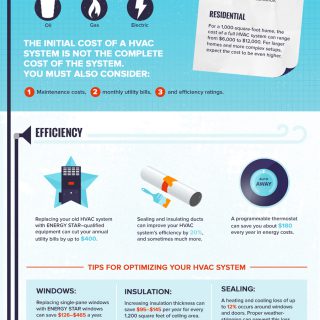The Ultimate Guide To Recognizing Warm Pumps - How Do They Work?
The Ultimate Guide To Recognizing Warm Pumps - How Do They Work?
Blog Article
Short Article By-Forrest Raymond
The very best heat pumps can conserve you significant amounts of money on power costs. They can additionally help reduce greenhouse gas discharges, especially if you utilize power instead of fossil fuels like propane and home heating oil or electric-resistance heaters.
Heatpump function significantly the like a/c do. This makes them a viable choice to traditional electric home heating unit.
Just how They Work
Heat pumps cool homes in the summertime and, with a little assistance from electrical energy or natural gas, they offer several of your home's home heating in the winter months. They're a good option for individuals that intend to reduce their use nonrenewable fuel sources but aren't ready to replace their existing furnace and air conditioning system.
They count on the physical truth that even in air that seems too cold, there's still energy existing: cozy air is always moving, and it intends to move into cooler, lower-pressure environments like your home.
A lot of power celebrity licensed heatpump operate at close to their heating or cooling ability throughout a lot of the year, decreasing on/off biking and conserving energy. For https://donovansdgdb.mdkblog.com/35013630/heat-pump-vs-furnace-which-is-the-better-home-heating-alternative-for-your-home , focus on systems with a high SEER and HSPF ranking.
The Compressor
The heart of the heatpump is the compressor, which is likewise called an air compressor. This mechanical moving tool utilizes possible energy from power production to raise the pressure of a gas by decreasing its volume. It is various from a pump in that it just works on gases and can't deal with liquids, as pumps do.
Atmospheric air enters the compressor through an inlet valve. It travels around vane-mounted arms with self-adjusting size that split the interior of the compressor, creating multiple cavities of varying size. The blades's spin pressures these tooth cavities to move in and out of phase with each other, pressing the air.
The compressor pulls in the low-temperature, high-pressure refrigerant vapor from the evaporator and presses it into the warm, pressurized state of a gas. This procedure is duplicated as needed to supply heating or cooling as needed. The compressor also has a desuperheater coil that reuses the waste heat and adds superheat to the cooling agent, transforming it from its fluid to vapor state.
The Evaporator
The evaporator in heat pumps does the same thing as it does in fridges and ac unit, transforming fluid refrigerant into an aeriform vapor that removes warm from the area. Heat pump systems would certainly not work without this crucial tool.
This part of the system is located inside your home or structure in an indoor air trainer, which can be either a ducted or ductless system. It includes an evaporator coil and the compressor that compresses the low-pressure vapor from the evaporator to high pressure gas.
Heatpump take in ambient heat from the air, and after that utilize electricity to move that warmth to a home or company in home heating mode. lossnay ventilation makes them a lot a lot more power reliable than electric heaters or heating systems, and since they're using tidy electrical power from the grid (and not shedding fuel), they additionally create far less exhausts. That's why heat pumps are such fantastic ecological choices. (As well as a huge reason why they're becoming so popular.).
The Thermostat.
Heatpump are excellent choices for homes in cold environments, and you can use them in combination with typical duct-based systems and even go ductless. They're a wonderful different to fossil fuel heating systems or traditional electric heaters, and they're extra sustainable than oil, gas or nuclear heating and cooling devices.
Your thermostat is the most important component of your heatpump system, and it functions extremely differently than a traditional thermostat. All mechanical thermostats (all non-electronic ones) work by utilizing substances that change dimension with raising temperature, like curled bimetallic strips or the broadening wax in a cars and truck radiator shutoff.
These strips consist of two different types of metal, and they're bolted together to create a bridge that finishes an electrical circuit attached to your HVAC system. As the strip gets warmer, one side of the bridge increases faster than the other, which causes it to bend and signal that the heating system is required. When https://www.usnews.com/360-reviews/services/home-warranty/how-to-buy-home-warranty remains in heating mode, the reversing valve reverses the flow of cooling agent, so that the outdoors coil currently operates as an evaporator and the indoor cyndrical tube ends up being a condenser.